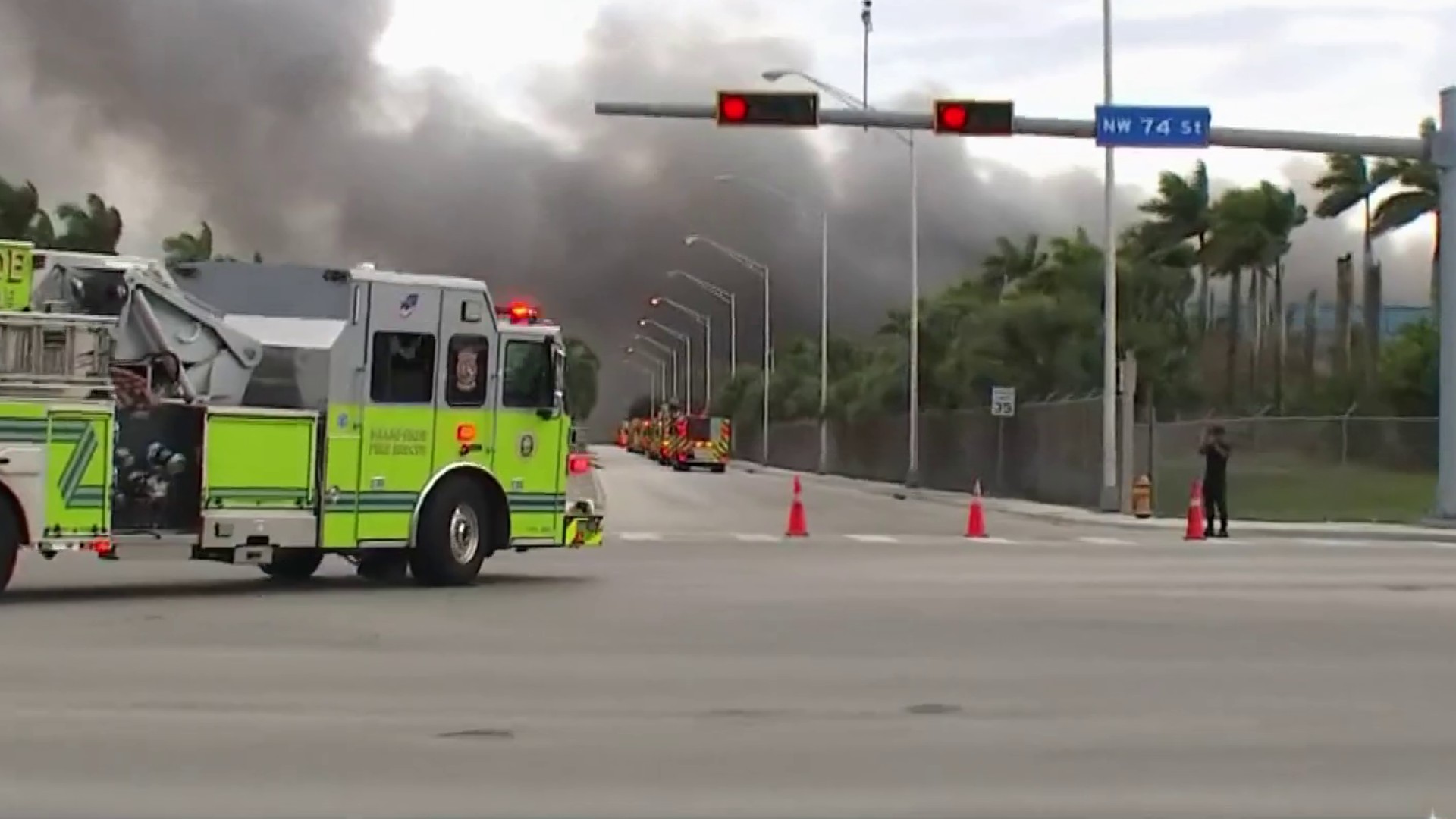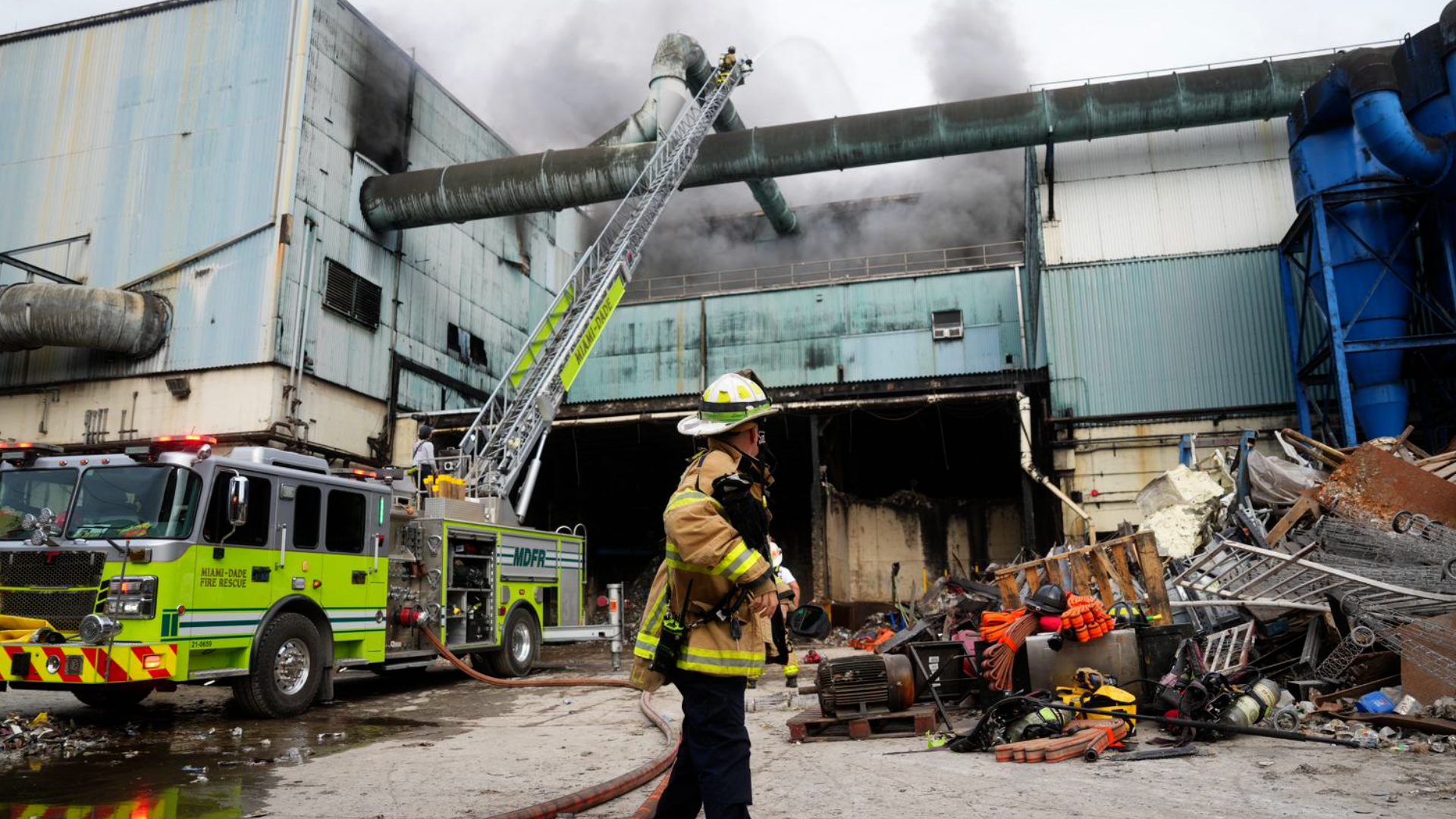A massive fire broke out Sunday at a waste-to-energy plant in Miami-Dade County that's been in the news in recent years.
More than 200 firefighters responded to the blaze at the Miami-Dade County Resources Recovery Facility on Northwest 97th Avenue in Doral.
MORE ON THE DORAL FIRE
No injuries were reported but crews were still working to put out the fire Monday.
The Hurricane season is on. Our meteorologists are ready. Sign up for the NBC 6 Weather newsletter to get the latest forecast in your inbox.
WHAT IS THE RESOURCES RECOVERY FACILITY?
The facility was built back in 1985 on land owned by Miami-Dade County. It is operated by Covanta Energy through a contractual agreement with the county.
According to the county's website, the facility, which processes more than 1 million tons of waste annually, is supported by two county landfills, a co-located ash monofill and three solid waste transfer stations.
Waste delivered to the plant is processed in two separate operations: one for garbage, which is food waste or other items that come out of the kitchen; and one for trash, which can include yard waste, furniture, fixtures and other similar waste items.
On the garbage side, ferrous and non-ferrous metals are recovered for recycling. These materials are sold to outside vendors and are a source of recycling credit for the County. The remaining garbage is shredded to produce refuse-derived fuel, which is used to generate electricity.
On the trash side, the material is sorted and shredded. Magnets separate recyclable ferrous materials and high-grade soil is removed through a series of trommels.
The ash product resulting from the waste-to-energy process is 10 percent of the original waste-material volume delivered to the plant. This ash is placed in a monofill – a specially constructed landfill used only for ash located next to the plant.
Power generated at the facility is sold to a private company and supplied to the electrical grid. This amount of energy is sufficient to operate the plant and to supply the electrical needs of approximately 35,000 homes.
Revenue generated from the sale of the electricity is shared equally between the County and the plant operator. The County's portion of the revenue is used to offset the plant's operational costs and to meet the community's disposal needs.
CONCERNS OVER THE FACILITY
The facility has drawn criticism from local leaders and residents who say it produces an unpleasant smell that can be felt for miles.
Over the years, residential communities in Doral have expanded closer to the plant making the problem worse for some.
"It just literally hits you in the face and it’s really incredible unpleasant," resident Ivette Gonzalez-Petkovich told NBC 6 in 2021.
Others have said the waste-to-energy system is seen by some as a replacement for recycling.
"If it's detracting from your recycling and your reuse, that can be a negative aspect of it," Jen Brady, with Climate Central, told NBC 6 in 2021.
Covanta officials said it's a supplement, not a replacement for recycling.
Last year, it was announced that the county was exploring replacing and/or relocating the facility.
IMPACT FROM SUNDAY'S FIRE
Miami-Dade Fire Rescue Chief Ray Jadallah said there are a total of 11 buildings at the facility and four caught fire Sunday. By Monday, two buildings remained on fire.
Jadallah said it's believed the fire originated from a conveyor belt.
Thick black smoke could be seen rising from the facility for miles, but officials said there was no danger to residents.
"Our fire and rescue staff are still on the site responding to the blaze as well as conducting ongoing air quality testing. All tests have come back clear at this time," Miami-Dade Mayor Daniella Levine Cava said at a news conference Sunday night. "There is no danger to the particulates or matter in the smoke."
Levine Cava said the area around the plant was experiencing highly smoky conditions potentially impacting visibility, and said out of an abundance of caution residents in the area should remain indoors and close their windows.
Anyone who didn't need to be in the area was asked to avoid it if possible, Levine Cava said.
Despite her assurances, some residents weren't happy with the situation.
"This is an unsafe way to manage waste, not just from what we see today, but in the day-to-day, the community in Doral has been experiencing all kinds of effects," attorney Nestor Perez said.
"It’s concerning, a hazard for residents living in Doral due to the fact that you don't know if that could explode one day," resident Diego Godoy said. "Right now it didn’t happen but we got houses, schools, everything is near this place so it could be hazardous for the residents."



